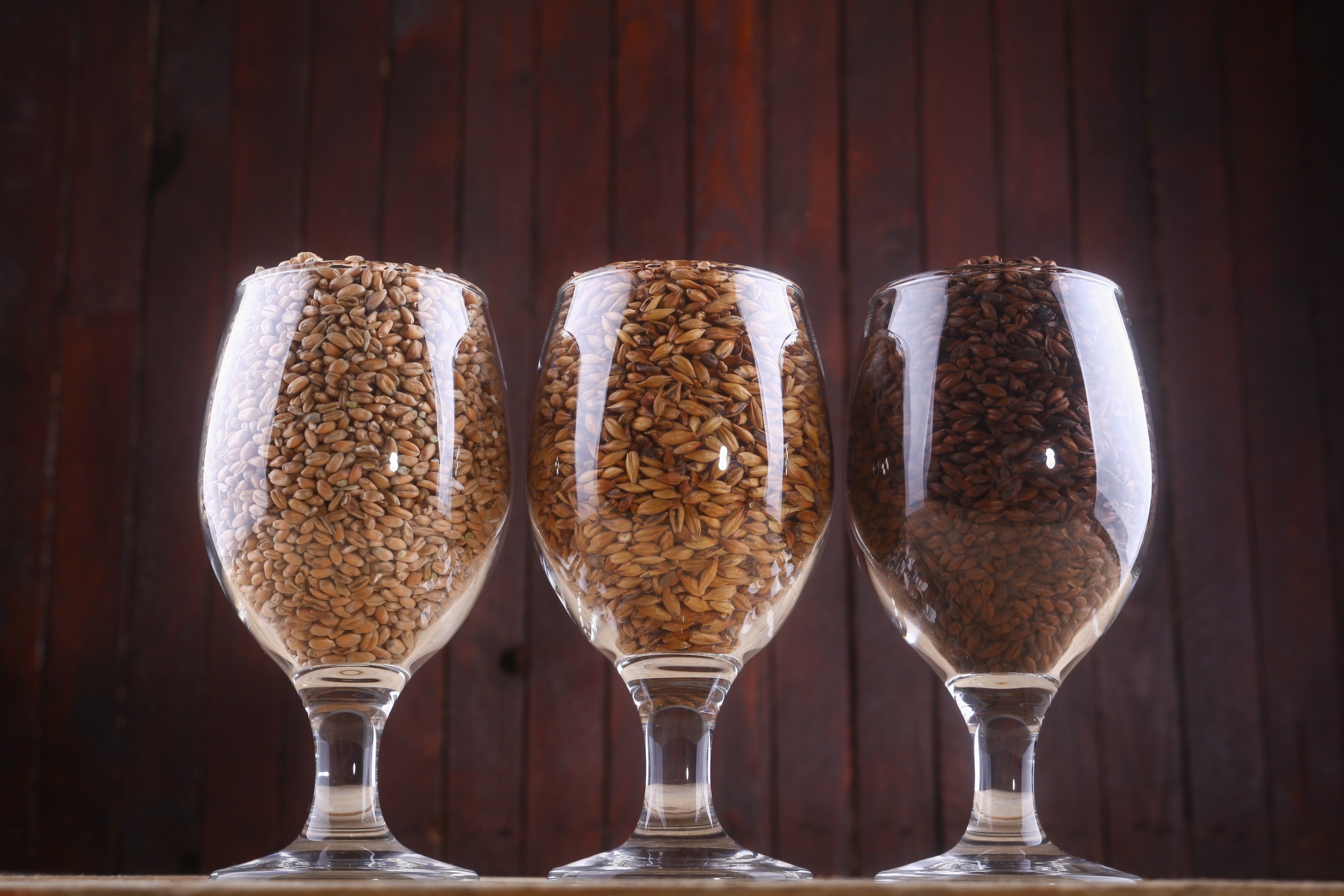
Base malts are the foundation of beer, providing the majority of fermentable sugars and contributing essential flavors and characteristics to the final brew. These malts form the backbone of the grain bill, and their selection plays a crucial role in shaping the overall profile of the beer. In this exploration, we’ll delve into the world of base malts, examining their characteristics, usage, and influence on the brewing process.
1. Pale Malt: The Canvas of Brewing
Pale malt, often referred to as 2-row or 6-row malt, is the most versatile and widely used base malt in brewing. Derived from well-modified barley, pale malt undergoes a moderate kilning process that imparts a light color and a mild, malty flavor. Its enzymatic activity makes it an excellent choice for promoting the conversion of starches to sugars during mashing, ensuring a robust fermentation process.
This malt serves as the canvas for a wide range of beer styles, from pale ales and lagers to stouts and IPAs. Its neutral flavor allows other specialty malts and hops to shine, making it a go-to choice for brewers seeking a clean and crisp foundation for their recipes.
2. Pilsner Malt: Crisp and Clean
Pilsner malt is a subtype of pale malt specifically designed for brewing the classic Pilsner lager. It undergoes a lighter kilning process, resulting in a pale color and a clean, crisp flavor profile. Pilsner malt provides the signature lightness and maltiness associated with Pilsner-style beers, making it an essential ingredient for achieving the refreshing qualities characteristic of this beer style.
Beyond Pilsners, brewers often use this malt in other light lagers and ales where a subtle malt character is desired. Its ability to produce a light color without overwhelming flavors makes it a favorite for brewers aiming to showcase delicate hop aromas and flavors.
3. Munich Malt: The Essence of Bavarian Tradition
Munich malt is a richer and more flavorful base malt, kilned to a higher degree than pale malt. It imparts a pronounced malty sweetness and a light amber to reddish-brown color to the beer. Popular in traditional Bavarian lagers such as Märzen and Bock, Munich malt adds depth and complexity to the malt profile, creating a more robust and malt-forward character.
Brewers often use Munich malt in combination with lighter base malts to achieve a balance of malt sweetness and a clean finish. Its versatility extends beyond German-style beers, finding its way into various ales where a malt-forward profile is desired.
4. Vienna Malt: The Secret of Vienna Lagers
Vienna malt falls between pale malt and Munich malt in terms of kilning, offering a balance of malt sweetness and a light toasty character. Originating from Vienna lagers, this malt contributes a deep golden to amber color and a malt complexity that enhances the overall character of the beer.
Vienna malt is not only a key ingredient in Vienna lagers but also finds application in a range of ales, including amber ales and some pale ales. Its ability to provide a toasty maltiness without the heaviness of darker malts makes it a valuable tool for brewers seeking a nuanced malt profile.
5. Maris Otter: The English Elegance
Maris Otter is a heritage variety of malt prized for its rich, biscuity flavor and premium quality. Named after the breeder’s farm in England, Maris Otter is often considered the gold standard for English-style ales. It undergoes traditional floor malting, contributing a distinct nuttiness and a deep golden color to the beer.
This malt shines in ales where a full malt character is desired, such as bitters, milds, and porters. Its unique flavor profile, often described as “biscuity” or “bready,” adds depth to the beer, making it a favorite among brewers aiming to capture the essence of traditional English brewing.
6. Golden Promise: The Scottish Elixir
Golden Promise is a malt variety that hails from Scotland, known for its pale color and sweet, malty flavor. It is a popular choice for brewing Scottish ales, where it contributes to the characteristic maltiness and sweetness of the style. Golden Promise undergoes a kilning process that strikes a balance between pale and caramel malts, making it versatile for a range of beer styles.
Brewers appreciate Golden Promise for its ability to create a rounded malt profile without overwhelming other flavors. It is frequently used in a variety of ales, including pale ales, IPAs, and even some lighter lagers.
7. American 2-Row: The Backbone of Craft Beer
American 2-row malt is a staple in the craft beer scene, serving as the backbone for a myriad of beer styles. It is similar to traditional pale malt but is often produced with a slightly different variety of barley. American 2-row malt provides a clean and neutral base, allowing the brewer to showcase the flavors of hops or specialty malts.
Widely used in pale ales, IPAs, and many American ales, this malt has become synonymous with the American craft beer movement. Its consistent quality and versatility make it a reliable choice for brewers experimenting with various styles.
8. Rye Malt: Spice and Complexity
While not a traditional base malt, rye malt deserves mention for its growing popularity in brewing. Rye adds a unique spicy and slightly fruity character to the beer, as well as a silky mouthfeel. Brewers often use rye malt in conjunction with other base malts to create rye pale ales, IPAs, and even rye-infused stouts.
Rye malt’s contribution to beer is distinctive, offering complexity that sets it apart from traditional barley-based brews. Its inclusion in a recipe can bring an exciting twist to the flavor profile, appealing to those seeking more adventurous and flavorful brews.
Conclusion
Base malts form the foundation of beer, providing the sugars needed for fermentation and shaping the beer’s overall flavor and character. Whether it’s the clean canvas of pale malt, the rich maltiness of Munich malt, or the toasty notes of Vienna malt, each base malt brings its unique qualities to the brewing process. Brewers, armed with an understanding of these malts, can artfully combine them to create an endless array of beer styles, each with its distinct personality and charm. As the craft beer movement continues to evolve, the exploration of new malt varieties and innovative combinations ensures that the world of base malts remains dynamic and full of possibilities for brewers and beer enthusiasts alike.


Leave a Reply